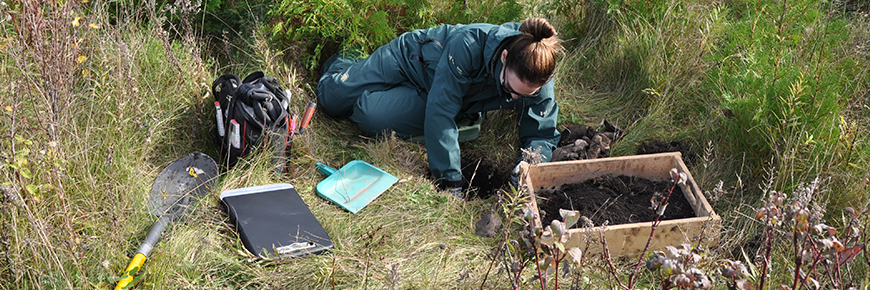
Protecting the fort’s natural and cultural legacy
Fort St. Joseph National Historic Site
By Mike Bohms
Parks Canada is working to enhance critical habitat for monarch butterflies, which are a species at risk, while also preserving the ruins at Fort St. Joseph National Historic Site. This multi-year project that’s focused on the meadow surrounding the fort ruins uses fire, archaeology, and citizen science.
The Government of Canada launched an inter-departmental initiative, called Canada’s Nature Legacy, aimed at protecting the country’s biodiversity, ecosystems, and natural landscapes. Fort St. Joseph is participating by enhancing habitat for the monarch butterfly and other essential pollinators.
The meadow landscape around the ruins of the fort provides critical habitat for monarchs at the northern edge of their range, with milkweed plants for monarch caterpillars, and native wildflowers for adult butterflies.
A resource conservation report was developed, outlining the current knowledge - and gaps in knowledge - of monarch use of the site. It also identified challenges in maintaining the meadow habitat. Late summer vegetation surveys were completed to provide a baseline of the current plants and flowers growing in the meadow. Early season surveys will be completed in 2022 to gauge the effectiveness of the monarch habitat enhancement project as it moves forward.
In late 2021, some saplings and shrubs were removed from the meadow to make way for native wildflowers and grasses. Parks Canada staff plan to test the effectiveness of prescribed fire near the ruins for controlling the spread of trees. A small plot has been selected for a controlled burn in spring 2023. Archaeologists surveyed the plot to gather data about the soil profile and the location and depth of any archaeological resources. After the burn, the archaeologists will return to see how deep the fire burned, how it affected the soil, and the impact on “test” artifacts that were deliberately put in place. Plant regrowth in the burned area will be monitored and compared to what was there in 2021/2022.
This summer, site staff will conduct regular surveys of monarch use of the meadow in order to fill some of the knowledge gaps identified by the resource conservation report. Each week, from the monarchs’ arrival in May until their fall migration in September, staff will record breeding and feeding, in designated plots. In the fall, staff will look for butterflies gathering and waiting for good weather to cross Lake Huron to begin their journey south for the winter. Visitors to the fort will have a chance to contribute to the data collection through citizen science programs such as Mission Monarch and iNaturalist.
Preserving the meadow also preserves the ruins of the fort and the surrounding fur trade community. The root systems of fast-growing young trees can damage the ruins, while forest growth would obscure historic sight lines. So, protecting Fort St. Joseph’s natural legacy goes hand in hand with protecting its cultural legacy as well.
Consider helping with data collection by becoming a citizen scientist!
Related links
- Date modified :